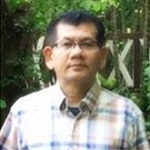Synthesis and Luminescent Properties of Eu3+/Tb3+ Rare Earth Ions Doped Li2SrSiO4 Phosphors
Vol 6, Issue 1, 2023
VIEWS - 3117 (Abstract)
Abstract
The series of luminescent materials of Eu3 +, Tb3 + doped Li2SrSiO4 were synthesized by a high-temperature solid-state method. The phase purity of the samples was measured by X-ray powder diffraction (XRD). The luminescent properties of the samples were studied by UV-visible excitation spectra and emission spectra The It is found that the strong absorption of Eu3 + doped Li2-xSr1-xEuxSiO4 is from the 250 ~ 290 nm charge transfer band of Eu3 + and the 7F0 → 5L6 absorption transition of 393 nm. The strongest emission of the emission spectra at 393 nm is 614 nm and 701 nm, respectively, from the 5D0 → 7F2 and 5D0 → 7F4 transitions of Eu3 +. Tb3 + doped sample Li2-xSr1-xTb xSiO4 excitation spectrum is mainly composed of Tb3 + ion fd transition and charge transfer band composed of broadband, the strongest absorption at 269 nm, the emission of the main emission of 5D4 → 7F5 transition (542 nm).
Full Text:
PDFReferences
- Sun Jiayue, Du Haiyan, Hu Wenxiang. Solid luminescent materials [M]. Beijing: Chemical Industry Press, 2003: 1-4.
- Xu Xurong, Su Mianzeng. Luminescence and luminescent materials [M]. Beijing: Chemical Industry Press, 2004: 97.
- Su Qiang. Rare earth chemistry [M]. Zhengzhou: Henan Science and Technology Press, 1993.
- Chen Zhanheng. Rare earth new material and its application in high-tech field [J]. Rare Earth, 2000,21 (1): 53-57.
- Yan Lai, Zhao Yongliang, An Xiaoping. Rare earth complex luminescent materials research and application [J]. Inner Mongolia Petrochemical, 2002,28: 5-8.
- Yu Quanmao edited. Inorganic luminescent materials research and application of new progress [M]. Hefei: China University of
- Science and Technology Press, 2010: 29-32.
- Chinese Academy of Sciences, Jilin Institute of Physics, "solid light" prepared by the group. Solid luminescence [M]. Hefei: China University of Science and Technology Press,1976.
- Liu Guanghua. Rare earth materials [M]. Beijing: Chemical Industry Press,2007.
- Blasse G. The Influence of charge-transfer and Rydberg states on the luminescence properties, structure and bonding 13[M]. New York: Spring-Verlag BerlinHeidelberg,1975.
- Cao Tie-Ping. Characteristics and application of rare earth luminescent materials [J]. Journal of Baicheng Teachers College,2006, 20(4):42-44.
- Liu Xing-Ren, Wang Xiao-Jun, Xie Yi-Hua. PDP, FED and LED luminescent materials [J]. Liquid Crystal & Display,1998 13(3):155-161.
- Ji Xudong. Study on the technology of new phosphor for PDP [J]. Optoelectronic Technology, 1999,40(4):50-57.
- Zhang Shu-yu. Growth and properties of borate optical crystal Ca3 (BO3) 2 and KNaA12B2O7 [D]. Institute of Physics, Chinese Academy of Sciences, 2-3.
- Zhang Shantong, Zhu Shaolong. Progress of mercury-free fluorescent lamps (1): Low-pressure Xe discharge fluorescent lamps [J]. China Lighting,2002,5:l-4.
- Shu Wan-gen, Zheng Ling-zhi, Zhou Zhong-cheng. Studies on the development of rare earth borate phosphors [M]. Rare Earth, 2002 23(6):77-79.
- Hu Xiao-hua, Yang Ying-guo, Pang Ming. Application of rare earth elements in PDP phosphor synthesis [J]. Mineral Resources Protection and Utilization,2004,4:44-46.
- Kazan Jin, et al. Inorganic luminescent materials [M]. Beijing: Chemical Industry Press,1980:68.
- Wilson JR. Transforming the battle field: the Laser’s edge [EB/OL]. 2007, (3)13: 174
DOI: https://doi.org/10.24294/jacs.v1i1.368
Refbacks
- There are currently no refbacks.

This work is licensed under a Creative Commons Attribution-NonCommercial 4.0 International License.

This site is licensed under a Creative Commons Attribution 4.0 International License.


